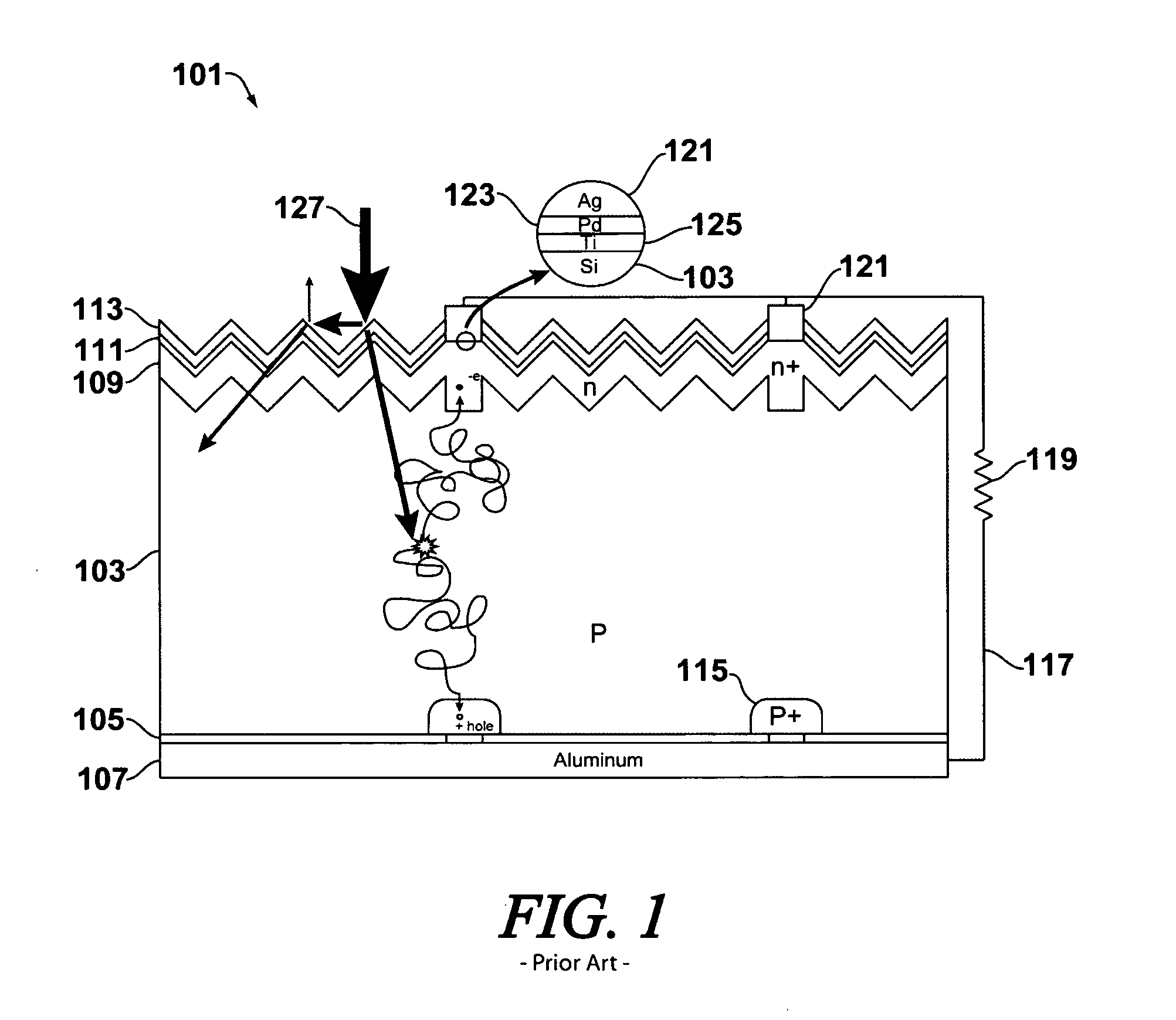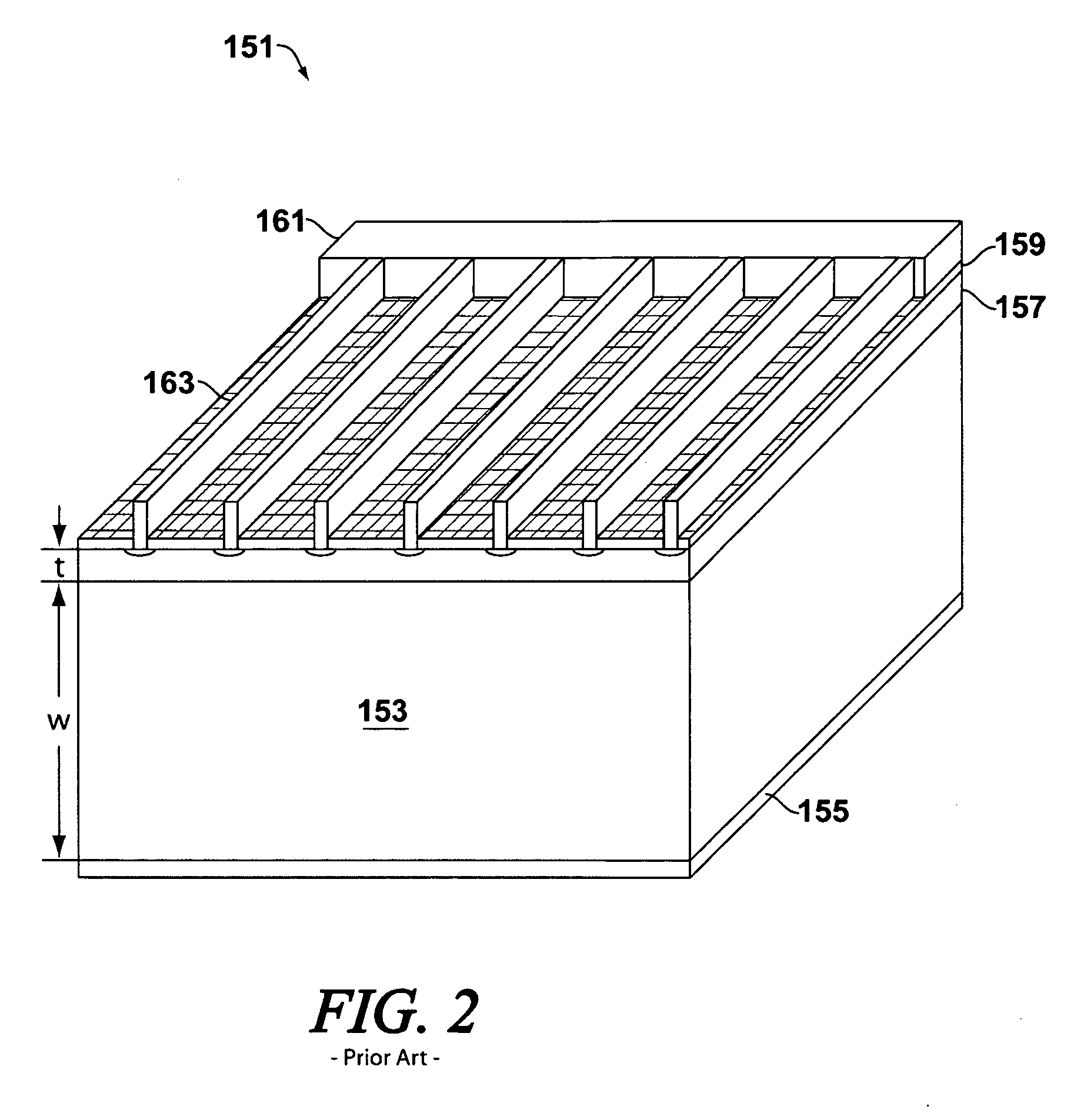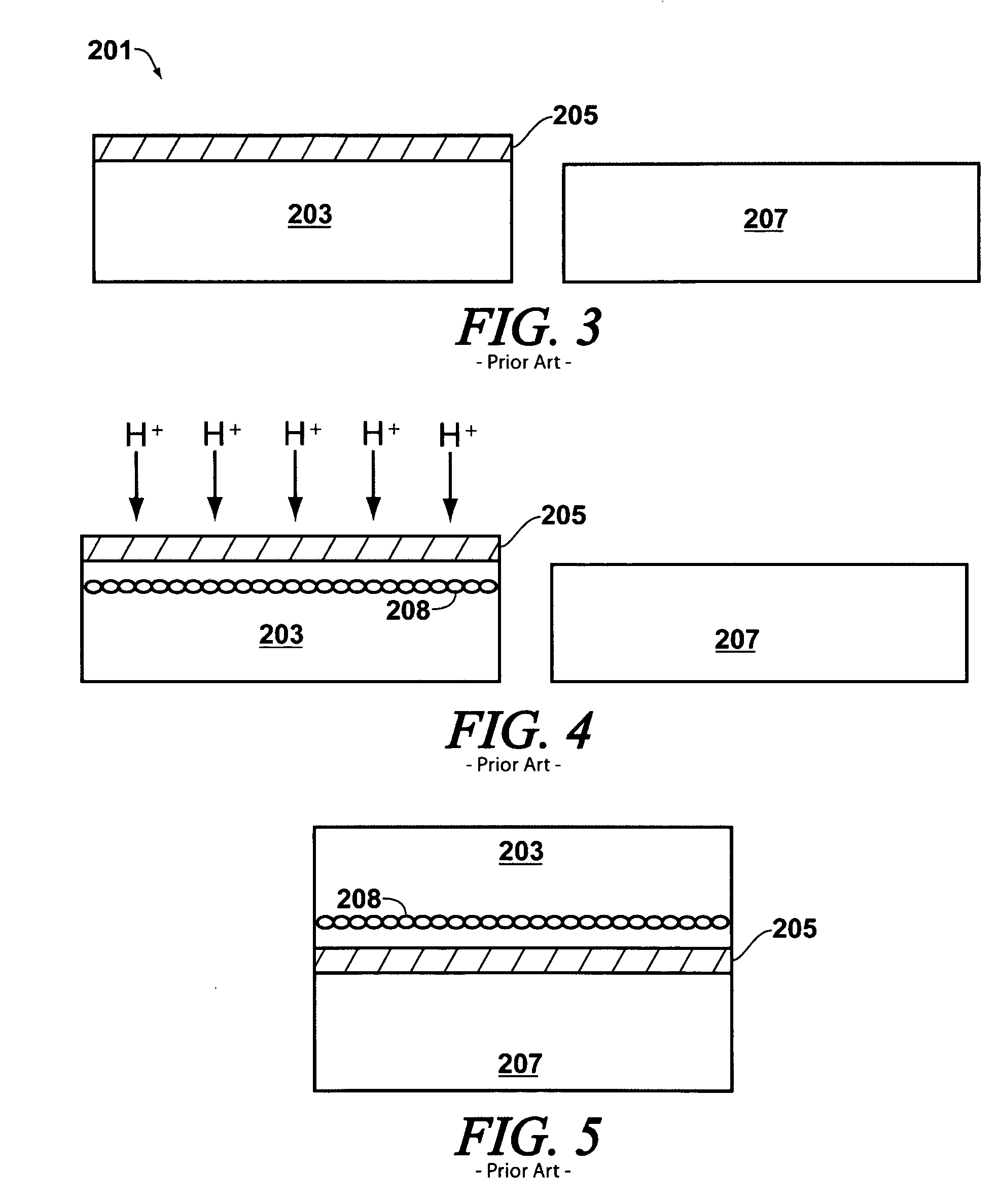Photovoltaic device having a textured metal silicide layer
a technology of metal silicide layer and photovoltaic device, which is applied in the field of semiconductor devices, can solve the problems of significant price increases in the final solar cell module, the shortage of raw polysilicon feedstock used in the manufacture of silicon-based solar cells, and the inability to meet the requirements of photovoltaic energy generation, etc., and achieve the goal of developing less expensive photovoltaic modules
- Summary
- Abstract
- Description
- Claims
- Application Information
AI Technical Summary
Problems solved by technology
Method used
Image
Examples
Embodiment Construction
[0033]It has now been found that the aforementioned needs in the art may be met through the use of metal silicides or other metal-semiconductor intermetallic compounds to fabricate solar cells. Such materials may be utilized to simultaneously create a bonding agent, a back surface field (BSF), an optical reflecting layer, and / or a low resistivity rear ohmic contact in solar cell structures. The methodologies described herein may be utilized to fabricate low cost thin film solar cells having high efficiency, and may also be employed to create structures having multiple solar cells disposed on a common substrate, wherein the cells themselves may be fabricated using other techniques and structures as are known to the art.
[0034]By way of example, devices may be made in accordance with the teachings herein by a process which includes (a) splitting a semiconducting thin film from a semiconductor substrate; (b) depositing a metal film on a handle substrate such as stainless steel, metal fo...
PUM
| Property | Measurement | Unit |
|---|---|---|
| depth | aaaaa | aaaaa |
| depth | aaaaa | aaaaa |
| depth | aaaaa | aaaaa |
Abstract
Description
Claims
Application Information
 Login to View More
Login to View More - R&D
- Intellectual Property
- Life Sciences
- Materials
- Tech Scout
- Unparalleled Data Quality
- Higher Quality Content
- 60% Fewer Hallucinations
Browse by: Latest US Patents, China's latest patents, Technical Efficacy Thesaurus, Application Domain, Technology Topic, Popular Technical Reports.
© 2025 PatSnap. All rights reserved.Legal|Privacy policy|Modern Slavery Act Transparency Statement|Sitemap|About US| Contact US: help@patsnap.com



